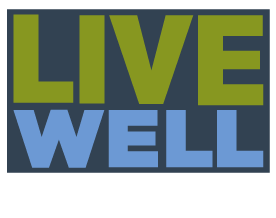Promising Practices
The Promising Practices database informs professionals and community members about documented approaches to improving community health and quality of life.
The ultimate goal is to support the systematic adoption, implementation, and evaluation of successful programs, practices, and policy changes. The database provides carefully reviewed, documented, and ranked practices that range from good ideas to evidence-based practices.
Learn more about the ranking methodology.
Filed under Evidence-Based Practice, Health / Alcohol & Drug Use, Teens, Families
Goal: The primary goal of GGC is to reduce youth substance abuse and problem behaviors by increasing family involvement that is rewarding and enhances parent-child bonds.
Impact: Significant positive effects on increasing family involvement and interaction and reducing youth substance abuse were observed. A cost-benefit analysis estimates a $5.85 benefit for every dollar invested in the program.
Filed under Good Idea, Economy / Housing & Homes, Adults, Urban
Goal: ReStore Kansas City was created to be an entrepreneurial, fundraising arm for Habitat for Humanity Kansas City through sales of donated new and used building materials, furniture and appliances. By salvaging useable materials from people who no longer need them, ReStore is saving space in landfills, giving the public affordable materials, and helping to further the mission of affordable housing in the Kansas City area.
Impact: Two stores raised more than $5 million and approximately 60,000,000 lbs. of material were diverted from going into the local landfill.
Filed under Evidence-Based Practice, Health / Heart Disease & Stroke
Goal: The goal of the Hartslag Limburg intervention is to reduce heart disease among low-income, high-risk community members.
Filed under Good Idea, Community / Public Safety
Goal: The goal of this legislation is to build a safe and connected transportation systems to serve pedestrians, cyclists, motorists, elderly and disabled residents. This legislation aims to reduce pedestrian and cyclist fatalities.
Filed under Evidence-Based Practice, Health / Maternal, Fetal & Infant Health, Children, Families
Goal: The goal of Early Head Start (EHS) is to promote healthy prenatal outcomes for pregnant women, enhance the development of very young children, and promote healthy family functioning. The goal of Head Start is to increase school readiness of young children in low-income families.
Impact: Studies have demonstrated positive effects of the program for both 3- and 4-year-old children on pre-reading, pre-writing, vocabulary, and parent reports of children’s literacy skills. For 3-year-olds, a greater number of parents reported improved access to health care and better health status.
Filed under Evidence-Based Practice, Health / Mental Health & Mental Disorders, Children, Teens, Families, Urban
Goal: The mission of Head to Toe is to teach children and their families the skills to manage body weight as they grow by living a healthy lifestyle that includes regular physical activity, healthy eating habits, and a positive self-image.
Impact: From August 2011 to May 2016, 485 children and their parents or guardians have enrolled in the Head to Toe program. Head to Toe has effectively increased knowledge of nutrition, physical activity and emotional health among participants.
Filed under Good Idea, Health / Older Adults, Older Adults, Urban
Goal: White Crane's health outreach model strives to reduce the incidence of risk factors for preventable disease, to motivate and educate seniors to take control of their health, and to make primary health care services accessible to vulnerable elders.
Filed under Evidence-Based Practice, Education / Childcare & Early Childhood Education
Impact: The Community Preventive Services Task Force (CPSTF) recommends center-based early childhood education programs (ECE) to improve educational outcomes that are associated with long-term health as well as social- and health-related outcomes. Economic evidence indicates there is a positive return on investment in early childhood education. The benefits from students' future earnings gains alone exceed program costs.
If targeted to low-income or racial and ethnic minority communities, ECE programs are likely to reduce educational achievement gaps, improve the health of these student populations, and promote health equity.
Filed under Effective Practice, Health
Goal: To assess the impact of affordable housing on health care outcomes in a low-income population who have experienced housing instability.
Impact: Costs to health care systems were lower after people moved into affordable housing. Primary care visits went up after move-in; emergency department visits went down. Residents reported that access to care and quality of care improved after moving into housing.

